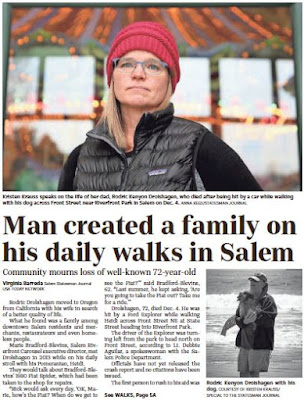 |
| In print on December 31st |
From "If It Smells Like Hell, It’s Probably Pictsweet - The Mayor of Salem Speaks Out About Human Rights on the Home Front":
For over twenty years I have driven by that foul smelling mushroom plant on the east side of Salem, thinking, “How can people stand to live near this putrid smelling place?” Never once did I ever stop to ask, “How can people stand to work behind those closed doors, which shut out the light, but not the smell?”It goes on at some length and is very much worth reading.
However, the most offensive smell emanating from that plant is not from the manure in which the mushrooms are grown, but rather from the abusive attitude and conditions under which the Pictsweet company forces their employees to work.
As Mayor of Salem, I was recently invited by some of the plant workers to speak with them about these conditions.
In doing so, I never imagined that I’d end up with the President of the Oregon State Senate publicly attacking me in the local press. Nor did I imagine I’d find myself nearly pinned to a padlocked chain link gate by a 16 wheeler semi, along with Cesar Chavez’s son-in-law, Arturo Rodriguez, 1,000 miles from City Hall.


















































